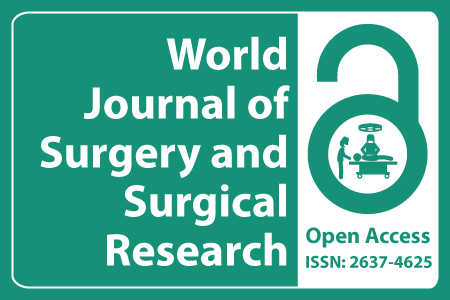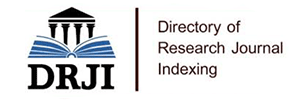
Journal Basic Info
- Impact Factor: 1.989**
- H-Index: 6
- ISSN: 2637-4625
- DOI: 10.25107/2637-4625
Major Scope
- Transplant Surgery
- Gynecological Surgery
- Cardiothoracic Surgery
- Vascular Surgery
- Cardiac Surgery
- Surgical Procedures
- Otolaryngology & ENT Surgery
- Trauma Surgery
Abstract
Citation: World J Surg Surg Res. 2022;5(1):1402.DOI: 10.25107/2637-4625.1402
Optimized Conservative Surgical Treatment of Pulmonary Hydatid Cyst: A Retrospective Observational Cohort Study
Abdoulhossein Davoodabadi, Fatemeh Najjarian, Mohammad Java Azadchehr, Esmail Abdorrahhmkashi, Hassan Davoodabadi, Aboulhassan Alijanpour and Babak Haghpanah
Departments of General and Thoracic Surgery, Kashan University of Medical Sciences, Iran Departments of General Surgery Trauma Research Center, Kashan University of Medical Sciences, Iran Department of Biostatistics and Epidemiology, Kashan University of Medical Sciences, Iran Departments of Surgery, Qum University of Medical Sciences, Iran Departments of Surgery, Babol University of Medical Sciences, Iran Departments of Surgery, Kashan University of Medical Sciences, Iran
*Correspondance to: Abdoulhossein Davoodabadi
PDF Full Text Research Article | Open Access
Abstract:
There are some controversies on surgical options of pulmonary hydatid cyst; no surgical guideline is available to considering the best option in each various types. Aim & Objective: We analyzed our experience in intact and infected pulmonary hydatid cysts of >5 cm diameter with focusing on possible preserving the lung tissue, the best surgical option in each type, and compare it with others similarities published studies. Patients and Methods: This observational cohort analysis was conducted on 138 consecutive patients with pulmonary hydatid cyst during July 2008 to July 2022. Surgical options were analyzed on cyst >5 cm diameter, classified as infected and intact cyst. The Age, sex, clinical manifestation, recurrent rate, hospital length of stay, postoperative complications and long-term results in each groups were assessed. The American Society of Anesthesiologists Physical Status, Charlson Comorbidity Index (CCI), Complexity of surgery and Clavien-Dindo score also were determined. Results: Out of 138 patients, between 15 to 79 years old, had 152 cyst >5 cm cyst diameter, 81 case (53.5%) were intact cyst classified as group 1 (G1), and the rest was infected which subdivided in to early infected 43 cases =28.4% as (G2) and cavity suppurated =28 cases (18.4%) as (G3). Cystectomy, closure of major bronchial opening and capitonnage was done in intact and early infected cysts. The result of both was the same, with no considerable major complication. Options in group G3 required special attention due to pericyst surface was severely inflamed, dirty and had pus, so were subdivided to 3 distinctive group include G3a, undergone bronchial opening closure without capitonnage, G3b group, undergone capitonnage without pericystectomy and G3c group, in addition of bronchial opening closure and capitonnage, pericystectomy also had been performed. Major complication in the subgroups of G3a was 2 patients, G3b 3 patients, but in the subgroup of G3c, not considerable complication was seen. Conclusion: Capitonnage significantly decreased the complication rate of surgical treatment in of all form of pulmonary hydatid cyst. Optimized approach in both intact and in early infected cysts was: Cystectomy, closure of major bronchial opening and capitonnage, in suppurated cyst, also was bronchial opening closure, Pericystectomy and capitonnage.
Keywords:
Albendazole; Capitonnage; Endobronchial rupture; Hydatid cyst of lung; Pericystectomy
Cite the Article:
Davoodabadi A, Najjarian F, Azadchehr MJ, Abdorrahhmkashi E, Davoodabadi H, Alijanpour A, et al. Optimized Conservative Surgical Treatment of Pulmonary Hydatid Cyst: A Retrospective Observational Cohort Study. World J Surg Surgical Res. 2022; 5: 1402.













